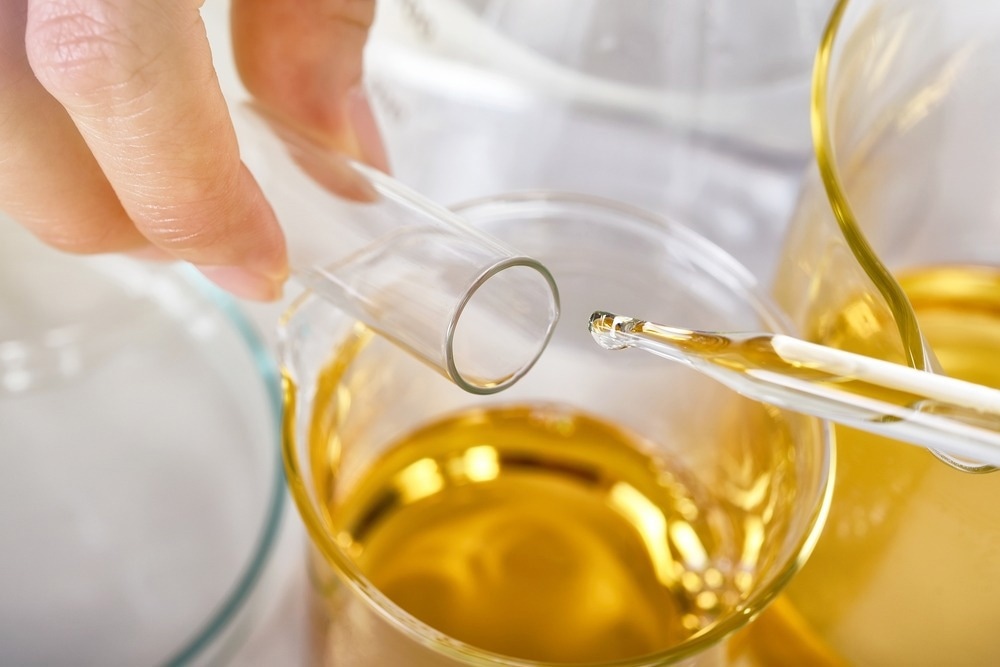A group of researchers from Queen Mary University of London, Imperial College London, Northwestern University in Evanston, USA, and Bielefeld University, Germany has developed a novel type of polymer nanomembrane with aligned supramolecular macrocycle molecules.

Image Credit: ARTFULLY PHOTOGRAPHER/Shutterstock.com
These novel nanomembranes have qualities that suggest they will boost the effectiveness of separation techniques utilized extensively in the chemical and pharmaceutical sectors.
Molecular separations account for 45–55% of the energy used in conventional chemical and pharmaceutical manufacturing.
These procedures must be largely or entirely replaced by innovative separation strategies that utilize advanced membrane technology to make these processes more effective, affordable, environmentally friendly, and thus sustainable.
The research team’s findings, which were reported in the journal Nature, show that their aligned supramolecular macrocycle-based polymer nanomembranes outperform conventional polymer nanomembranes currently used in the chemical and pharmaceutical industries in terms of exceptional and highly selective filtration properties. Traditional polymer nanomembranes have a large range of pore diameters and no method for precise adjustment.
The molecularly designed macrocycles are aligned to create sub-nanometer pores in this new breed of polymer nanomembranes, which act as a very effective filtration gateway for molecules with size differences as small as 0.2 nm.
Researchers demonstrate how selectively functionalized macrocycle molecules, in which the upper rim with highly reactive groups selectively faces upright during the crosslinking reaction, could be used to arrange and align these microscopic cavities.
Grazing incidence wide-angle X-ray scattering (GI-WAXS) could be used to confirm the oriented construction of macrocycles in nanomembranes.
This enables the demonstration of the idea of leveraging distinct nanopore diameters using different cyclodextrin identities with Angstrom accuracy, and it also helps to observe the sub-nanometer macrocycle pores under high-resolution atomic force microscopy in ultrahigh vacuum.
These nanomembranes display higher ethanol permeance and molecular selectivity than commercial state-of-the-art membranes and are used in high-value pharmaceutical separations for enriching cannabidiol (CBD) oil as a practical proof of concept.
To create membranes with nanopores that can deliver precise, quick, and energy-efficient molecule separations, this unique concept offers practical techniques.
“The demand for CBD-derived pharmaceuticals has grown rapidly, due to their great efficacy in treating depression, anxiety, and cancer. Current state-of-the-art techniques for separating CBD molecules from extracts are expensive and energy intensive.”
Membranes can offer a cost-effective and energy-efficient alternative, but requires accurate separations between CBD and other natural components of similar dimensions dissolved in the extract solvent. Therefore, precise control of membrane pore size is critical to this opportunity.
Dr. Zhiwei Jiang, EPSRC Future Leadership Fellow, Exactmer Ltd
“In our work, the pore size of the aligned macrocycle membranes can be precisely tuned at Angstrom precision, which enabled one order of magnitude higher solvent transport and three-fold higher enrichment of CBD than commercial benchmark membranes. This extends the great potential of applying membranes in high-value industries that require accurate molecular selectivity,” stated Dr. Jiang.
He concluded, “This work would definitely not have been possible without the contributions from our collaborators in the USA and Germany. They provided the key evidence showing the alignment of the macrocycles (GIWAXS technique from USA) and visualization of the aligned macrocycle pores (AFM technique from Germany). Their results are important for verifying the molecular design and offering fundamental understandings of these membranes, and we will seek more opportunities for collaboration in future.”
Journal Reference:
Jiang, Z., et al. (2022) Aligned macrocycle pores in ultrathin films for accurate molecular sieving. Nature. doi:10.1038/s41586-022-05032-1.